- Register
- Log in to Tune-In
- Wishlist (0)
-
Shopping cart
(0)
You have no items in your shopping cart.
Beatles News
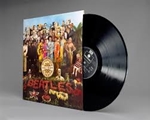
The cover of the Beatles’ Sergeant Pepper’s Lonely Hearts Club Band is iconic. No other image has perfectly captured the aesthetics of psychedelic art. Part of the cover’s appeal is the numerous famous faces on it.
Celebrities on the cover range from Bob Dylan to Lewis Carroll. The cover depicts 65 individuals in total – real and fictional. Oddly enough, only a few of the faces on the cover are women. Why is this?
What was the idea behind the famous Sgt. Pepper cover? Well, the faces on the cover were supposed to be the Beatles’ heroes. Jann Haworth, one of the designers of the cover, said the selection process was “was completely open-ended.” Surprisingly, the Beatles didn’t choose enough people to be on the cover to create a whole crowd.
Source: cheatsheet.com
details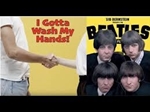
ifty years ago, in April, The Beatles broke up. But they remained so relevant that even the coronavirus crisis is borrowing from it. Their fun romantic song I Wanna Hold Your Hand has now been remastered to I Gotta Wash My Hands.
Another song that has acquired a new dimension altogether now is Here Comes the Sun, penned by George Harrison for a change, an oft-overlooked member of the band. A US hospital plays the song every time a patient recovers from coronavirus.
New Yorkers have been singing The Beatles’ songs during the lockdown.
So, how does a band that was together only for seven years still remain a glue between people and generations, even during a pandemic?
Source: Tuhin A. Sinha /theprint.in
details

At the beginning of 2019, Apple Corps Ltd and WingNut Films Ltd announced a new Beatles documentary, which would be based on around 55 hours of previously unreleased studio footage from the band’s 1969 “Get Back” and Let It Be sessions. Over the following months, Beatles fans have eagerly speculated about the film, which is being helmed by the Academy Award-winning director Sir Peter Jackson. Now, over a year later, more information has become available. As we await its premiere (currently slated for a September 2020 release via Disney), here’s what we know so far about The Beatles: Get Back.
It was made with the full co-operation of the band
Both Paul McCartney and Ringo Starr have sung the film’s praises, while John Lennon’s widow, Yoko Ono Lennon, and George Harrison’s widow, Olivia Harrison, have also offered their full support of the project.
Source: Sophie Smith/udiscovermusic.com
details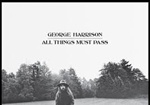
Each week, I'll present a new album for your consideration—a means for passing these uncertain times in musical bliss. For some readers, hearing about the latest selection might offer a chance reacquaintance with an old friend. For others, the series might provide an unexpected avenue for making a new one.
Classic rock has marked one 50th anniversary after another in recent years. When it comes to the Beatles, the bandmates' post-break-up solo work in 1970 is the most poignant of the bunch, especially when it comes to George Harrison. Having languished in the shadows of the world-breaking Lennon-McCartney songwriting juggernaut for nigh on a decade, the Beatles' lead guitarist was poised for a breakout release to define his own considerable talents apart from the group. As Harrison later recalled, "That was the great thing about [the Beatles] splitting up: to be able to go off and make my own record. . . . And also to be able to record with all these new people, which was like a breath of fresh air."
Source: salon.com
details

How old is Paul McCartney?
Paul McCartney was born in Liverpool on June 14, 1942 and is 77-years-old.
His mother, Mary, was a nurse, his father, James, a firefighter and Paul had a little brother called Michael and a stepsister, Ruth.
The singer, songwriter and producer found worldwide success as a vocalist and bassist for The Beatles and his songwriting collaboration with John Lennon is widely acknowledged as the most successful in musical history.
What are Paul McCartney's most famous songs?
During his songwriting partnership with John Lennon, from October 1962 to May 1970, Paul and John published 180 joint songs, which became the majority of The Beatles' catalogue of work.
Source: Smooth Radio
details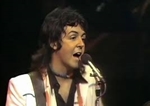
In 1973 Paul McCartney was beginning to truly forge his solo career. The Beatles were at the back of his mind and his path to solo stardom was laid out in front of him. But that didn’t mean the Fab Four weren’t still looming over everything he did.
One such presence was that of Sir Lew Grade, owner of the ATV television Network and, by extension, the Beatles’ Northern Songs catalogue. The singer had been crediting his wife Linda as his co-writer since 1971 and Grade was not happy about the inclusion.
Sir Lew Grade and Paul McCartney were deeply embroiled in a legal battle over the issue. Linda’s inclusion as the second composer of the song meant that Grade’s company were missing out on the royalties that would otherwise be due to them. Grade cited Linda’s lack of professional experience as a songwriter or musician as proof of McCartney’s clever switch to keep the PRS cheques in the family.
Source: faroutmagazine.co.uk
details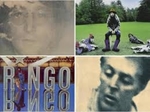
It was 50 years ago today that Paul McCartney’s solo debut album was released, taking some of the shine off the impending release of The Beatles’ final album Let It Be. The previous week McCartney had previewed a promotional copy of McCartney containing a press release interpreted by the media as McCartney announcing that The Beatles were no more. The split had been brewing for years and would become official in due course, although, at the time, McCartney took the flak and was typecast as the man who broke up the beloved Fab Four. Accordingly, McCartney was roundly slated by the critics.
The five decades since have witnessed over 60 studio albums from the four solo Beatles and to say that they are a bit of a mixed bag is an understatement. A handful have attained classic status, however, so here is my choice of the 10 best solo Beatles albums.
Source: bioreports.net
details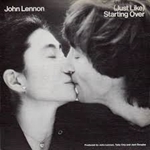
The day John Lennon was murdered, “(Just Like) Starting Over” was on a steady climb up the Billboard charts. That day, “Starting Over,” the last single that Lennon would release during his lifetime, was at #6 and rising. There’s no reason to think it wouldn’t have eventually hit #1. As the first John Lennon single in five years, “(Just Like) Starting Over” certainly had public curiosity working for it. It’s a modest shrug of a song, but plenty of modestly shrugging Paul McCartney songs had ascended to the top of the charts after the Beatles’ breakup.
To plenty of people, “(Just Like) Starting Over” probably sounded like a pleasantly breezy love song from a guy whose voice they knew and loved. But then Mark David Chapman pumped four bullets into Lennon’s back, inflicting a generational trauma and altering the course of popular music. “(Just Like) Starting Over” probably sounded pretty different after that.
Source: Tom Breihan/stereogum.com
details
John Lennon, one of the frontmen of the Beatles, is renowned for his musical career, which spanned decades despite his early death. However, he was also known for his marriage to Yoko Ono, the artist who some suggest broke up the Beatles when she began dating Lennon. The couple had a son, Sean, but who is he and what does he do now?
Sean Ono Lennon was born in New York City on October 9, 1975, which was his father’s 35th birthday.
The young child had a great deal of contact with his father, as John chose to become a house husband and look after his son while Sean’s mother, Yoko Ono, pursued her artistic career.
Sadly, this changed when John was murdered outside his house on December 8, 1980.
Source: Jenny Desborough/express.co.uk
details
Although the Beatles came to an end in 1970, the band's breakup is still a hotly debated topic among fans, including Howard Stern. In 2018, the radio host got Paul McCartney to state, once and for all, that John Lennon's relationship with Yoko Ono led to the band's breakup.
On Tuesday, during his Sirius XM show, he probed the musician on another element of the breakup, suggesting McCartney didn't keep the group going with its remaining members — George Harrison and Ringo Starr — because he underestimated Harrison's abilities.
While McCartney didn't deny he overlooked his late bandmate, who died in 2001, he attributed the group's demise to more personal reasons.
"I hear what you're saying, but the thing is Howard, that's like a family. When families break up, it's to do with the emotion and the emotional pain," he responded. "You're hurting too much, and so it wasn't going to happen. We'd been through too much and I think we were just fed up with the whole thing."
Source: Rachel Yang /Explore Entertainment
details
Paul McCartney was in too much pain after John Lennon’s left to continue with The Beatles
Sir Paul McCartney has said he was ‘hurting too much’ and too ‘fed up with the whole thing’ to continue with The Beatles after John Lennon left the band.
The Yellow Submarine musician and band members George Harrison and Ringo Starr went through an enormous emotional upheaval after their friend and colleague decided to leave in 1969, he said.
Appearing on Sirius XM, host Howard Stern took the opportunity to ask the musician why they did not continue after John’s departure and further elements of the break-up, suggesting that it was partly to do with his underestimation of George, who died in 2001.
The 77-year-old said: ‘The thing is Howard, that’s like a family. When families break up, it’s to do with the emotion and the emotional pain.
Source: Zara WoodcockWednesday/metro.co.uk
details
Sir Paul McCartney has insisted there was too much "emotional pain" to carry on The Beatles without John Lennon.
The group went their separate ways in 1970 after the singer - who was shot dead in 1980 - decided to quit but his former bandmate insisted he, Ringo Starr and the late George Harrison never considered continuing as a three-piece because they felt so "fed up".
Speaking to Howard Stern on SiriusXM, Paul said: "It's like a family, when families break up it's to do with the emotion and the emotional pain, you can't think of a smart idea like that at the time, you're hurting too much, it wasn't going to happen.
"We'd been through too much and I think we were just fed up of the whole thing."
When the DJ discussed the songwriting partnership Paul and George could have enjoyed, the 77-year-old superstar admitted the 'My Sweet Lord' hitmaker's writing abilities had often been underestimated because he was a "late bloomer" when it came to penning lyrics.
Source: missoulian.com
details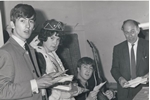
THERE is nobody from Northwich who got closer to the Beatles that the late Gwili Lewis.
In the 1960s, when the band played their gigs before packed out audiences, he was the manager of Northwich Memorial Hall.
On Sunday mornings, I used to sit down with Gwili for a cup of tea and chat after the service at Castle Community Church in Northwich.
Sadly, that all came to an end after Gwili passed away peacefully after a long and successful life in June last year, aged 98.
One Sunday morning, in his usual charming and entertaining manner, Gwili told me more about what went on behind the scenes on Carnival Day 1963, which saw The Beatles perform in Verdin Park.
The band had arrived early that day and they were awaiting Gwili at the old police station.
Gwili said: “My job was to drive them around the Northwich suburbs for a couple of hours in a van to conceal them from the crowds.
Source: By John Hulme/northwichguardian.co.uk
details
On a late summer afternoon more than half a century ago, Chris and Monty Field, teenage brothers, found a spot on the courthouse square in Harrisburg, Illinois, to watch a Shriners parade. By some accounts, 12,000 people had gathered for the festivities, even though the population of this farm town was only about 9,000. As 40 marching units, some in their characteristic fezzes, came down the street, Chris and Monty engaged in conversation with a striking blonde in her early 30s who spoke with an English accent. Her name, she said, was Louise. She was there with her children and two brothers. Louise did most of the talking, but the younger of the two brothers, whose name was George, made an impression all the same. “He had a funny haircut, kind of long and stringy,” Monty recalls. “Most of the boys at that time had flattops.” George was wearing jeans, he noticed, with a hole at the knee.
Source: Ackerman + Gruber,Alan Pell Crawford/smithsonianmag.com
details
George Harrison was the Beatles' acknowledged lead guitarist, but others subbed for him as far back as 1964's "You Can't Do That." There was also the trio approach employed on 1969's "The End," as first Paul McCartney, then Harrison and finally John Lennon traded two-bar solos three times.
In between, Lennon and McCartney would occasionally take over, even if Harrison continued to mime their guitar solos onscreen for "Another Girl" from the Help! movie and the promo clip for "Paperback Writer" – both of which were actually performed by McCartney.
This created some confusion, sometimes even within the group. "I don't think I was playing the guitar feedback" on 1967's "It's All Too Much," Harrison told Billboard in 1999. "As I say, I was playing the organ, so I think that was probably Paul that did that."
Source: ultimateclassicrock.com
details